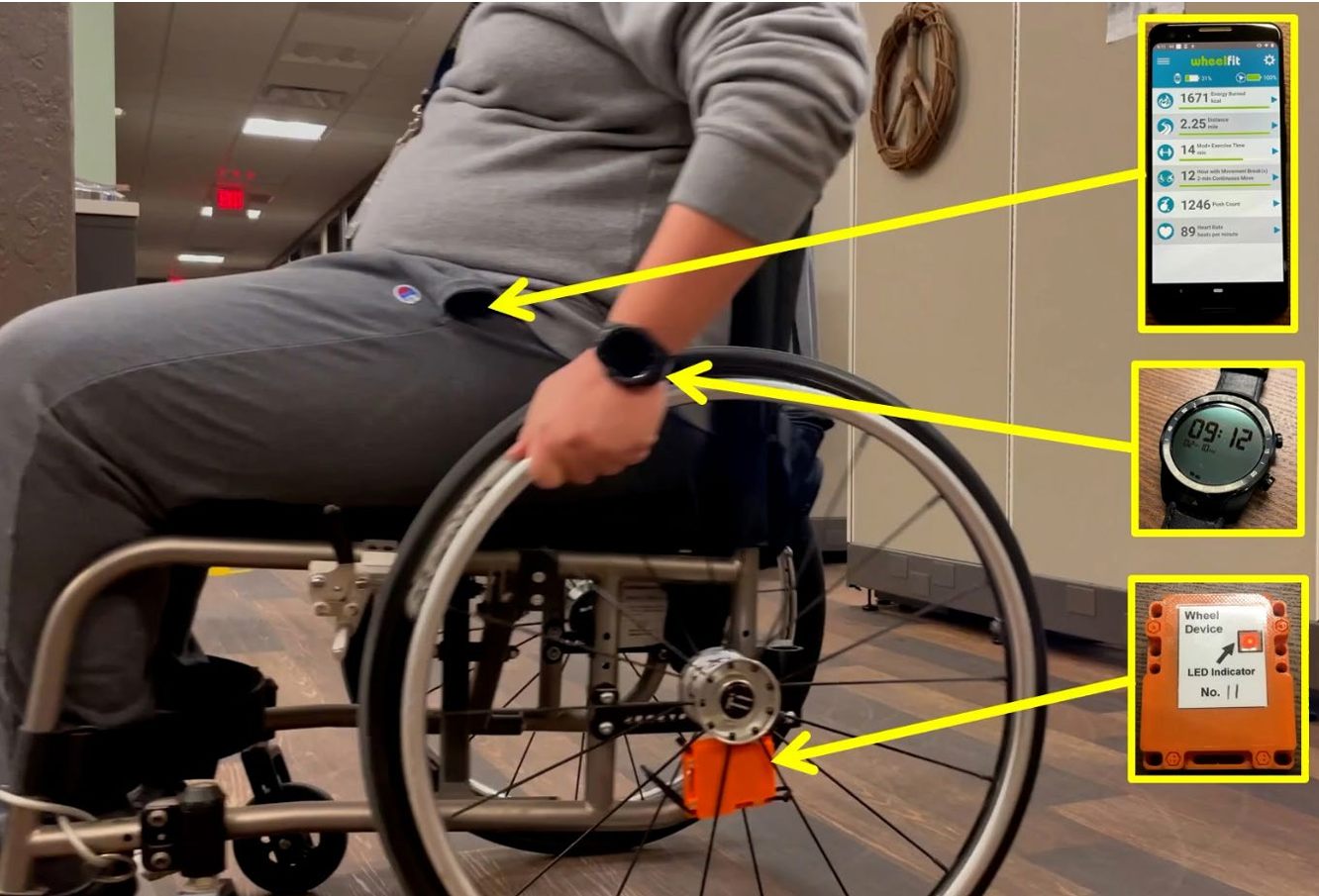Welcome to our dedicated research page on enhancing wearable technology accessibility for individuals with disabilities. This initiative tackles a significant gap in the current design of wearable technologies, which frequently fail to consider the unique needs of people with disabilities. For instance, individuals who use wheelchairs for mobility often find limited options in wearable devices. Furthermore, the algorithms driving many of these devices have not been developed or validated for a diverse range of users, including those with varied movement patterns due to differences in muscle tones, joint stability, and motor coordination. By adapting and validating wearable devices, our work seeks to ensure that these technologies enhance accessibility and effectiveness for individuals with disabilities.

Projects
- Activity Monitoring for Children with Disabilities
-
This project is part of two multi-site NIH R01 projects: “Body Composition and Energy Expenditure in Youth with Spina Bifida” and “Energy Expenditure and Weight-Related Behaviors in Youth with Down Syndrome” (PI: Michele Polfuss, UW-Miwaukee School of Nursing). Our team serves as a data center for all wearable data collected during the ramped protocol in the lab settings and during every living at home. Our goal is to develop and validate methods to classify physical activity intensities for children with spina bifida and children with Down syndrome, respectively, identify distinct physical activity phenotypes, and investigate how these are associated with health outcomes for both pediatric groups.
- WheelFit: Integrated Wearable and mHealth Solution for Promoting Physical Activity in SCI
-
This project develops WheelFit, a mHealth app designed to interface with two commercial wearable devices: an Android smartwatch and a wheel sensor. These devices stream users’ upper extremity and wheelchair movement data to the app, which calculates key physical activity metrics such as caloric expenditure, active time, sedentary time, sedentary breaks, and push counts using custom algorithms tailored specifically for individuals with SCI. WheelFit allows users to set their personal goals, track their progress, and review their activity history. The app also features an adaptive workout library designed to accommodate varied fitness levels. A four-week quasi-experimental study, consisting of a one-week baseline followed by a three-week intervention phase, was conducted to evaluate the feasibility and usability of WheelFit.
Recent Presentations & Publications
- 2024
-
Huang, Z., Veerubhotla, A. L., DeLany, J. P., & Ding, D. (2024). Preliminary field validity of ActiGraph-based energy expenditure estimation in wheelchair users with spinal cord injury. Spinal Cord, 1-9.
Ding, D., Huang, Z., Veerubhotla, A., & DeLany, J. (2024). Preliminary Field Validity of Free-Living Energy Expenditure Estimation in Wheelchair Users with Spinal Cord Injury via Wearable Device-based Models.
- 2023
-
Huang, Z., McCoy, D., Cooper, R., Crytzer, T., & Ding, D. (2023). Preliminary Feasibility Evaluation of a mHealth App to Promote Physical Activity in Manual Wheelchair Users. Archives of Physical Medicine and Rehabilitation, 104(3), e45.
- 2022
-
Rigot, S. K., Boninger, M. L., Ding, D., Collinger, J. L., Dicianno, B. E., & Worobey, L. A. (2022). Limb accelerations during sleep are related to measures of strength, sensation, and spasticity among individuals with spinal cord injury. Journal of NeuroEngineering and Rehabilitation, 19(1), 118.
Rigot, S. K., Boninger, M. L., Ding, D., McKernan, G., Field-Fote, E. C., Hoffman, J., ... & Worobey, L. A. (2022). Toward improving the prediction of functional ambulation after spinal cord injury through the inclusion of limb accelerations during sleep and personal factors. Archives of physical medicine and rehabilitation, 103(4), 676-687.
Shwetar, Y., Huang, Z., Veerubhotla, A., Knezevic, S., Hong, E., Spungen, A. M., & Ding, D. (2022). Predicting physical activity intensity using raw accelerometer signals in manual wheelchair users with spinal cord injury. Spinal Cord, 60(2), 149-156.
- 2021
-
Huang, Z., Shwetar, Y., Veerubhotla, A., & Ding, D. (2021). Converting raw accelerometer signals into ActiGraph counts for wheelchair-related activities. Age (years), 40, 13.
- 2020
-
Shwetar, Y. J., Veerubhotla, A. L., Huang, Z., & Ding, D. (2020). Comparative validity of energy expenditure prediction algorithms using wearable devices for people with spinal cord injury. Spinal cord, 58(7), 821-830.
Veerubhotla, A., Hong, E., Knezevic, S., Spungen, A., & Ding, D. (2020). Estimation of physical activity intensity in spinal cord injury using a wrist-worn ActiGraph monitor. Archives of Physical Medicine and Rehabilitation, 101(9), 1563-1569.
